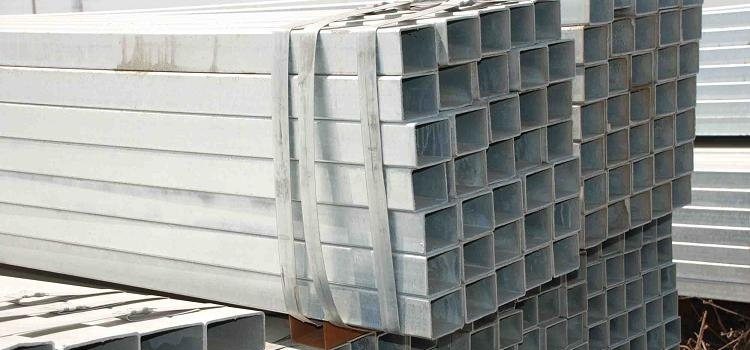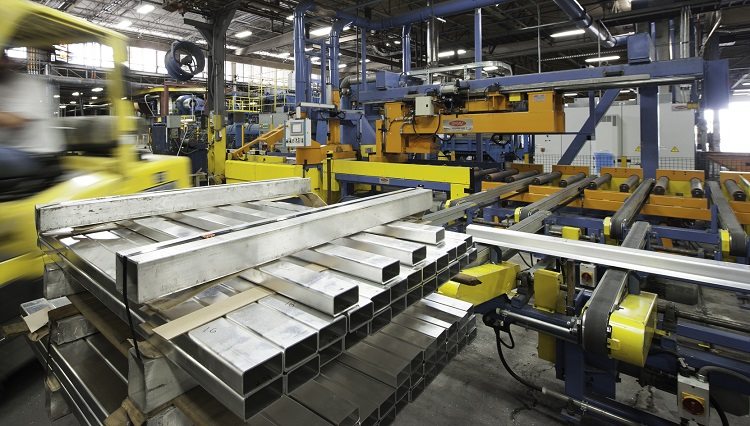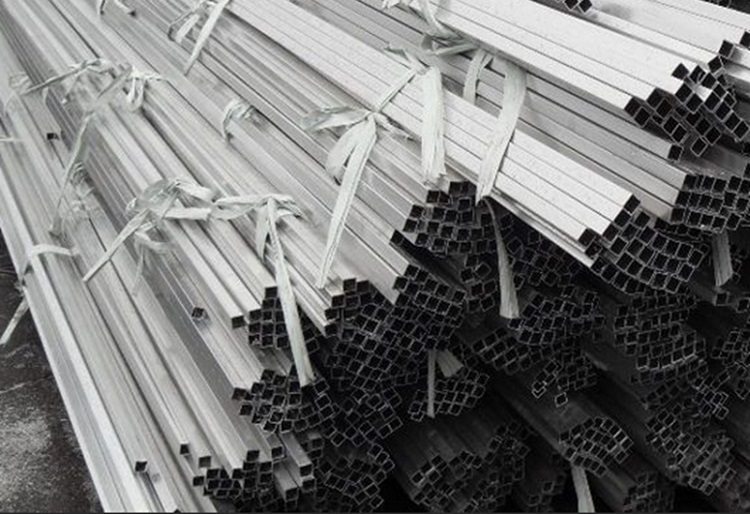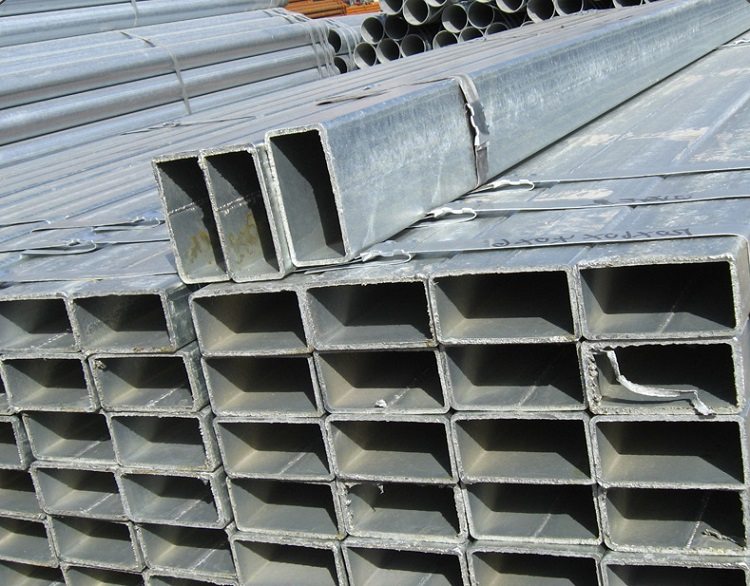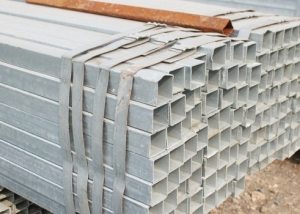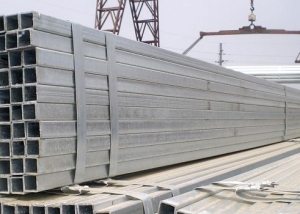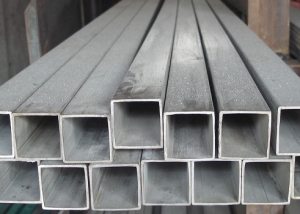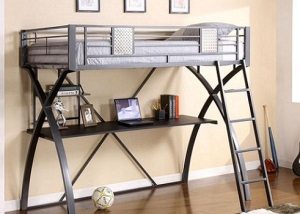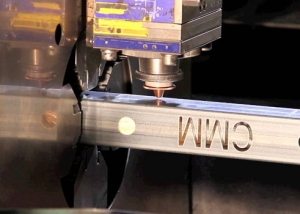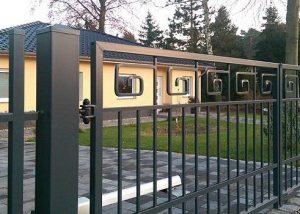Square or rectangular aluminum pipe is widely used in various fields. This may be the manufacture of electrical and building structures, the arrangement of engineering systems, the production of domestic, commercial and cryogenic equipment. Profile pipe is also in demand in the fuel, food and chemical industries, for the manufacture of furniture and as separate components. The product range is quite wide.
Content
Types of aluminum products
Products can be classified according to various criteria. According to the cross-sectional view, an aluminum pipe can be shaped, round, rectangular and square. Round products, in turn, are divided into thin-walled (with a wall up to half a centimeter) and thick-walled (more than half a centimeter).
When determining the size of such products, the following are taken into account:
- wall thickness;
- outside diameter;
- inner diameter.
The dimensions of a square pipe are determined by the wall thickness and its width. The rectangular cross-sectional shape of the product is characterized by wall thickness, as well as the width of the greater and lesser sides.
Note! The length and width / wall thickness of the pipe are measured in meters and millimeters, respectively.
Aluminum profiles can be subjected to various technological processing. So, there are pipes aged naturally (T) or artificial (T1), annealed (M) and not completely hardened (T5), cured (H), semi-cured (H2) and without heat treatment (hot pressed). Hardening is called hardening of aluminum rolled products with a temperature regime lower than during the recrystallization process.
Distinctive features of a square pipe
Aluminum profile pipe differs from other metal products in such qualities:
- high ductility;
- high bandwidth;
- ability to withstand excess pressure;
- good thermal conductivity;
- corrosion resistance;
- machinability compliance;
- hygiene;
- the ability to use in a fairly wide temperature range;
- resistance to aggressive environments.
In addition, it is permissible to weld an aluminum profile using various methods. Square tubeDespite its light weight, it is a durable and highly reliable product. Material properties help minimize external insulation.
Assortment of square pipes
Standard 18475-82 defines a range of square shaped tubes made of aluminum or alloys.
The theoretical mass and dimensions of the square tube are given in the table.
Table 1
| Side (nominal), * 102 mm | Mass meter square tube, g, at the wall, * 10-1 mm | ||||||
| 10-1,0 | 15-1,4 | 20-1,8 | 25-2,0 | 30-2,5 | 40-2,8 | 50-4,0 | |
| Allowable difference, * 102 mm no more | |||||||
| 0,002 | 0,0028 | 0,0036 | 0,004 | 0,005 | 0,0056 | 0,008 | |
| 0,10 | 91 | 125 | — | — | — | — | — |
| 0,12 | 113 | 157 | — | — | — | — | — |
| 0,14 | 135 | 190 | 236 | — | — | — | — |
| 0,16 | 156 | 222 | 280 | — | — | — | — |
| 0,18 | 178 | 255 | 323 | 384 | — | — | — |
| 0,22 | — | 320 | 411 | 494 | 566 | — | — |
| 0,25 | — | 369 | 476 | 576 | 664 | — | — |
| 0,28 | — | 418 | 541 | 658 | 763 | 959 | — |
| 0,40 | — | — | 802 | 986 | 1156 | 1481 | — |
| 0,48 | — | — | — | 1205 | 1418 | 1833 | — |
| 0,60 | — | — | — | — | — | 2361 | 2851 |
When calculating the theoretical mass, the density of the B95 alloy is taken, which is 2850 kg / m3. Calculation of a similar value for other alloys is performed using conversion factors.
Note! The maximum side deviation of 60 mm is ± 0.6 mm; ± 0.5 mm for all other sides.
By agreement with the consumer, it is permissible to manufacture a pipe with an intermediate size, which is not indicated in the table. Deviations are selected as for the closest smaller size. An aluminum pipe can have a length of 1 thousand to 6 thousand millimeters.
Assortment of rectangular products
Document 18475 defines a range of rectangular pipes.
The corresponding values are presented in the table.
table 2
| Party (nominal) | Mass of a meter of a rectangular pipe, g, with a wall, * 10-2 mm | |||||||
| 100-10 | 150-14 | 200-18 | 250-20 | 300-25 | 400-28 | 500-40 | ||
| Allowable difference, * 10-2 mm no more | ||||||||
| 20 | 28 | 36 | 40 | 50 | 56 | 80 | ||
| Smaller * 10 mm | Big, * 10-1 mm | |||||||
| 1,0 | 140 | 113 | 157 | 193 | — | — | — | — |
| 1,2 | 160 | 135 | 190 | 236 | — | — | — | — |
| 1,0 | 180 | 135 | 190 | 236 | — | — | — | — |
| 1,4 | 180 | 156 | 222 | 280 | 330 | — | — | — |
| 1,2 | 200 | — | 222 | 230 | 330 | — | — | — |
| 2,2 | 280 | — | 269 | 476 | 576 | 664 | — | — |
| 1,8 | 320 | — | 369 | 476 | 576 | 664 | 821 | — |
| 2,0 | 360 | — | 418 | 541 | 658 | 763 | 953 | — |
| 1,8 | 380 | — | 418 | 541 | 658 | 763 | 953 | — |
| 2,5 | 400 | — | 491 | 639 | 781 | 910 | 1151 | — |
| 3,0 | 450 | — | — | — | 918 | 1074 | 1371 | — |
| 3,0 | 500 | — | — | — | 986 | 1156 | 1481 | 1757 |
| 4,0 | 550 | — | — | — | 1192 | 1402 | 1811 | 2167 |
| 4,0 | 600 | — | — | — | 1260 | 1484 | 1921 | 2304 |
Maximum permissible deviation of the side 6 cm - ± 0.6 mm; for other parties this value is ± 0.5 mm.
Profile Square Tube Features
According to standard 18475-82, the deflection (transverse) of the sides of a square pipe cannot be more than half a millimeter if the side is up to 5 cm and 0.75 mm - if more than 5 cm. Smooth twisting of products should not exceed 1 degree per 1 meter of length.
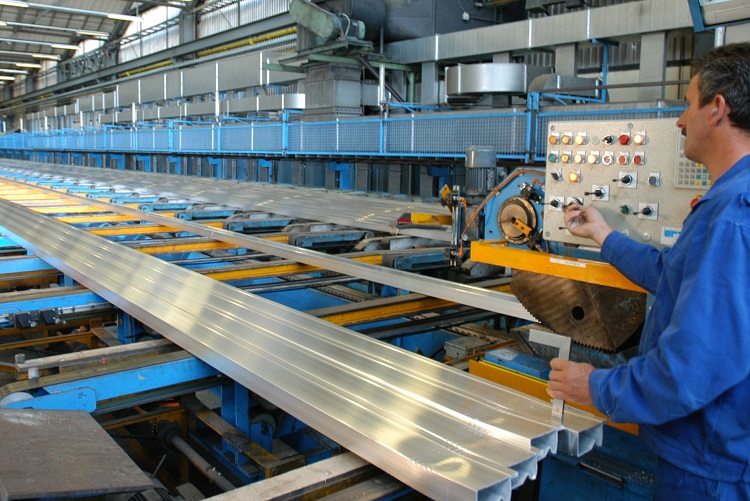
Each type of profile pipe has permissible deviations in parameters that are strictly controlled during production.
The straightness of square pipes requires special requirements. This parameter cannot be more than 1 mm per meter of length, for annealed products from alloys 1955 and D1 and with a side above 3 cm - not more than 3 mm.
Note! Annealed pipes with a side of up to 3 cm inclusive can be produced with a deviation from straightness, which is eliminated by applying a force of not more than 0.05 kN to a pipe located on the plane of the plate.
A profile pipe made of alloy D1 should have a temporary resistance of at least 0.39 GPa, a yield strength of at least 0.225 GPa, and a relative elongation of at least 12%.
Mechanical properties according to GOST 18475
According to GOST, an aluminum pipe has the mechanical properties given in the table.
Table 3
| Alloy grade | Wall * 10 mm | Material condition | Pipe side, * 10 mm | Elongation, * 10% | Yield Strength * 10-1 GPa | Temporary resistance, MPa |
| Not less | ||||||
| AD0, A5, A85, A8, AD1 | All thickness | Annealed | All sizes | 2 | — | 60 (for AD1 60-110) |
| Up to 0.2 | Caked | 0,4 | — | 80 (for AD1 110) | ||
| 0,2-0,5 | 0,5 | — | 80 (for AD1, 100) | |||
| AMTS, AMTS | All thickness | Annealed | 1,5 | — | 90-135 | |
| Caked | — | — | 135 | |||
| AMg0.7, AD31 | Annealed | 1,2 | — | No more than 155 | ||
| Caked | — | — | 155 | |||
| AMg1 | Annealed | 1,0 | — | 120-175 | ||
| Caked | — | 165 | ||||
| AD31 | After hardening, caked and aged naturally | 0,4 | 2,45 | 265 | ||
| After hardening, caked and aged artificially | 0,8 | 2,75 | 315 | |||
| Aged Naturally and Tempered | 1,3 | — | 174 | |||
| Artificially aged and tempered | 0,7 | — | 245 | |||
| AB | Annealed | 1,7 | — | Not more than 145 | ||
| Aged Naturally and Tempered | 1,4 | — | 205 | |||
| Artificially aged and tempered | 0,8 | 2,25 | 305 | |||
| Caked | — | — | 145 | |||
| D1 | Annealed | 1,0 | — | No more than 245 | ||
| Up to 0.10 | Naturally aged and hardened | Up to 2.2 | 1,3 | 1,95 | 375 | |
| 0,10-0,50 | 1,4 | 1,95 | 375 | |||
| Up to 0.10 | 2,2-5,0 | 1,2 | 2,25 | 390 | ||
| 0.10 to 0.50 | 1,3 | 2,25 | 390 | |||
| All thickness | More than 5.0 | 1,1 | 2,25 | 390 | ||
| All thickness | Caked | All sizes | — | — | 245 | |
| 1955 | All thickness | Annealed | All sizes | 1,0 | — | No more than 245 |
| 0.10 to 0.15 | Naturally aged in 30-35 days. and hardened | Up to 4.0 | 1,0 | 1,95 | 335 | |
| 0,15-0,50 | 1,0 | 1,95 | 335 | |||
| 0,10-0,15 | Naturally aged in 2-4 days. and hardened | 1,0 | 1,75 | 235 | ||
| 0.15 to 0.50 | 1,0 | 1,75 | 235 | |||
| 0,15-0,50 | After hardening, caked and aged naturally in 30-35 days. | 1,2-4,0 | 0,6 | 2,25 | 355 | |
| After hardening, caked and aged naturally in 2-4 days. | 0,6 | 1,75 | 265 | |||
| After hardening, caked and aged artificially | 1,0 | 2,55 | 375 | |||
Profile Requirements
The surface of the aluminum profile pipe must be absolutely clean. It does not allow delamination, shells, friability, non-metallic additives, cracks, traces of nitrate and corrosion, weights, as well as traces of burnout. Process grease may also remain on the profile pipe.
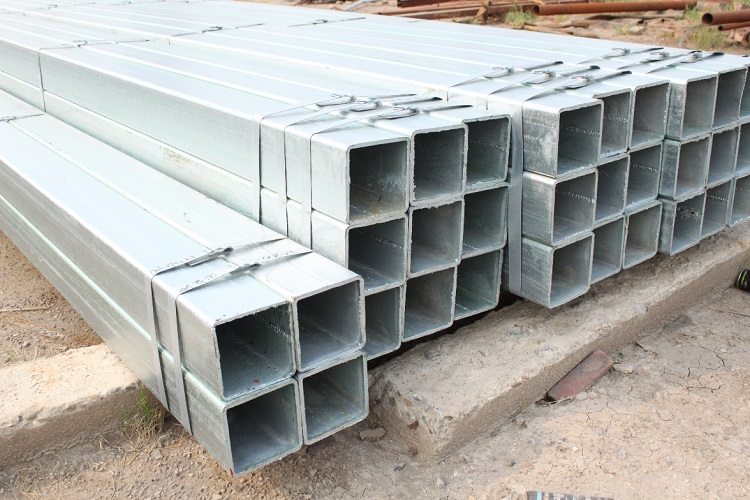
Requirements are also made for the appearance of pipes - there should be no visual defects on a quality product
At the same time, on the external faces there can be risks, captures, bubbles, scratches of nicks, pressing-in of various kinds if their depth does not lead the wall thickness beyond the permissible edges. An aluminum pipe may have dents, ring and spiral marks if they do not go beyond the tolerances of the side (or diameter).
Note! Partial trimming of the profile pipe is allowed if this does not bring the dimensions of the product beyond the maximum permissible values. Crack cleansing is excluded.
All types of products must necessarily be straight along the entire length, as well as evenly trimmed.
Using aluminum pipe
An aluminum pipe can be used in construction during interior finishing works, in facade systems, when installing cable networks, as auxiliary elements when installing an air duct. The square shape looks interesting as an interior detail and is suitable for frames of built-in furniture, decoration elements.
Both rectangular and square pipes can be used for concealed laying of communications, in the form of framing and reinforcing elements for various metal structures. Profiles of the most durable alloys are often used in industries that are associated with shipbuilding and aircraft manufacturing. Since aluminum alloy is absolutely safe, such pipelines can be found in the food industry.
An aluminum pipe of a rectangular or square shape, which is made of a less durable alloy, can act as a frame for cladding walls and ceilings. It allows you to reduce the cost and costs of finishing work.
Profile products are not afraid of the destructive effect of water, which allows their use in wet rooms, and also does not require treatment with insulating compounds.
An aluminum pipe, which is characterized by a square (rectangular) shape, is a product having in cross section one or a number of hollow spaces. Almost always, the profile pipe is coated with a special composition (anodized), which prevents its oxidation. The product range is wide and can vary depending on customer requirements.
